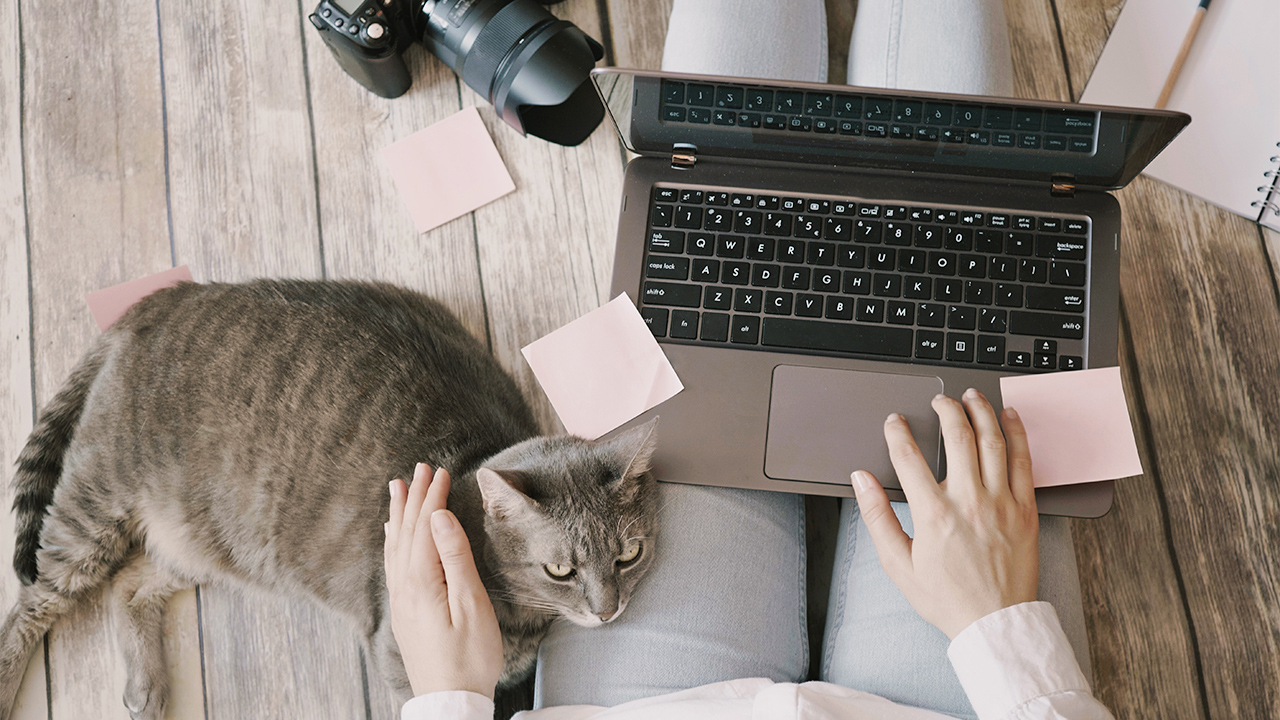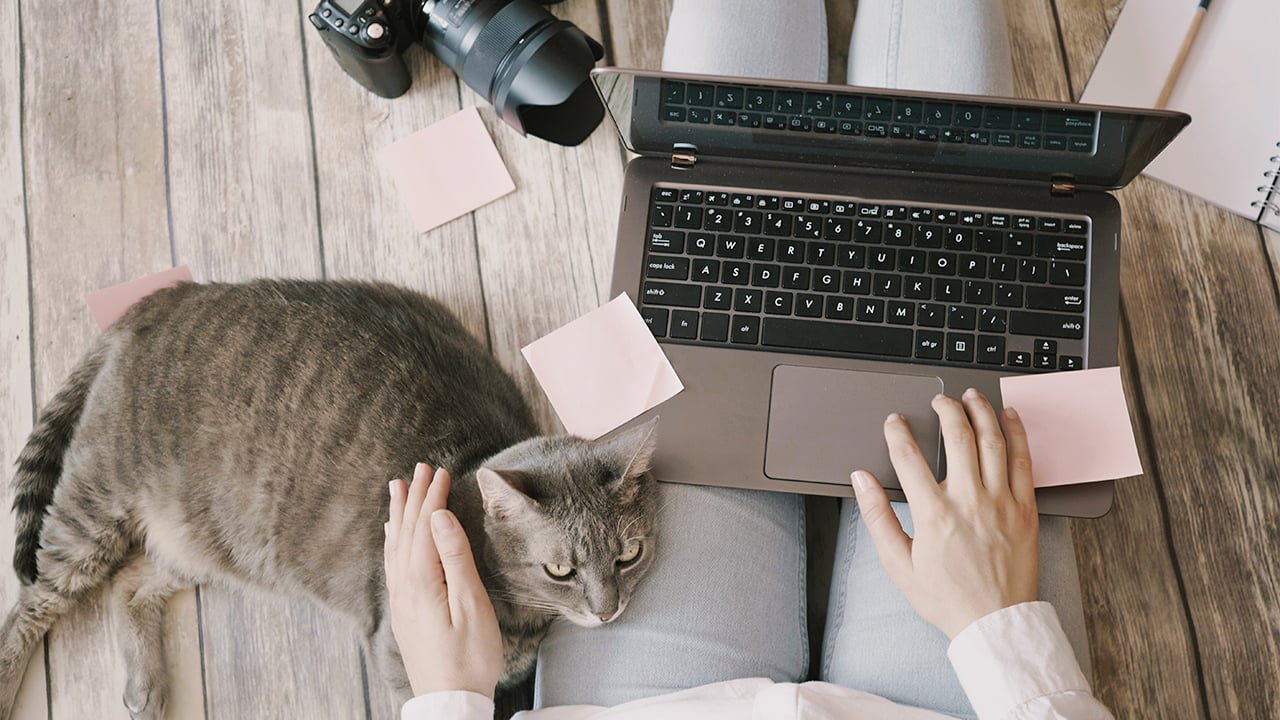
 Working from home is not a great option if a client wants to visit!
Working from home is not a great option if a client wants to visit!
Working from home might seem ideal. But in the world of video it can create some serious drawbacks. Arthur Ditner tells us why he thinks home working is a bad idea.
For many of us in the film industry working from home is the dream of breaking away from long commutes to the office and the regularity of a nine to five – it’s certainly an attractive idea! For myself, when I am working freelance, I now avoid working from home at all costs. About a year ago, I edited a pilot episode of a series out of my 1+den Toronto apartment. When a wine glass shattered on the floor after a successful session, I quickly realised that it would be the last job run out of my own place.
To preface: the context of this article is more or less aimed at recent graduates who may feel pressure to start purchasing high-ticket gear in order to take on client work. Before you do that, though, let’s break down some of the components for working in post production from home!
The client wants to visit
So, you’ve bought a luxurious new computer and some flashy new storage drives and you’re ready to get to work… only to discover your client wants to regularly sit in with you. Take a quick look at your home office. Is it client-friendly? Do you have any space at all or is your home office a laptop sitting on a card table? What if your client just sent some packages by courier to your home address and now you have to spend your afternoon, actually at home, waiting for the delivery to arrive and sign for it? What if your client needs to use the printer; is it easily set up? Finding space for yourself can be a difficult challenge in urban markets like New York, London and Toronto, and accommodating others only complicates this further. Renting temporary office space is easy with services like ShareDesk, HeyDesk, and Pickspace which offer Airbnb-for-offices style business models. Maybe, when it’s time to actually review with your client, book a larger public space – it will be more comfortable for everyone and will make you look more professional.
Purchasing your own gear vs renting out others will be a topic fiercely debated for ages. When it comes to post production though, I opt to rent vs buy now that I’m a bit older and have seen quite a few product cycles render my gear obsolete. If you are an editor, you need a decent computer, licensed software, high-resolution computer displays, decent audio monitoring, lots of storage in terms of size, lots of storage in terms of speed, and a fast reliable internet connection. You will need all of these things. When you add all this up, a standard editorial suite will easily cost thousands of dollars and usually much more than that. If it doesn’t cost that much money you’ve cut corners and you’ll have to pay for it in session. If you aren’t editing every single day, renting out someone else’s gear will often save you money in the long run.
Storage
Storage is one of the more annoying components to contend with because the variables are so great. Chances are your client was trying to save a few bucks and loaded all the media onto bargain pocket drives that operate far too slowly to actually work off. You’ll need to transfer the media onto a larger volume, but even then your larger drive may not be fast enough to handle a multi-camera project. So, you’ll need to render dailies or cache media onto faster drives – either workflow will take hours at a minimum. Now your labour costs are going to offset your hardware investment costs.
If you need to do colour accurate work you will additionally need a broadcast quality monitor that is properly calibrated. It will do you little good if your office is decorated with a string of trendy looking 1800K light bulbs strung along exposed red brick loft-style walls. Colour work needs to be executed in a treated room. The walls in a colour suite are grey for a reason – your eyes will automatically compensate and adjust to any colour ambience in the room. Therefore, if your room is overwhelmingly green, your images will most certainly look magenta once your review your content in a proper viewing space. If you decide that a professional display and just any room will do for colour work, you run the risk of making yourself look completely incompetent when you deliver the final product – at no fault of your eyes, of course, because things looked correct while you were working.
Loneliness
While never having to say “good morning” to a boss or an overly chatty colleague may sound ideal, never having to say “good morning” to anybody gets lonely real quick. You will be amazed at how hours can pass by checking your Twitter feed with no one around to keep you in check. I recommend searching out others in the industry and teaming up. Reach out to a local post production facility and ask for student/indie rates on gear or suites. There is a good chance that if they are sitting on a suite that is unbooked, they will cut you a deal as they will want to win over your future business. Getting out and working in a rented suite will present you with networking opportunities with the staff of the facility and other clients that are currently working in-house.
There are also many universities, for-profit colleges, arts collectives and value-added resellers in every major market that have already built-out suites for presentation and educational usage. If your project is an independent feature destined for the festival circuit there is a good chance you can get discounted rates at these types of institutions. It would be impossible for me to list out these kinds of resources for everyone in every market, but, here in Toronto, I am a member of the Liaison of Independent Filmmakers Toronto (lift.ca), a great facility that also offers a bookable colour suite with very affordable rates.
Between a comfortable workspace and having reliable and professional gear, and getting out and about meeting others in the business – you can see the value of getting out the door. Now, you don’t have to follow my advice verbatim. One way to roll back costs would be to start all your work independently at home and then rent out a suite when it comes time for client review. If you go this route make sure to arrive at the facility early and to test playback well before your client arrives. Moving projects between facilities will always take longer than expected to get your session up and running.
Header image courtesy of Shutterstock.
Tags: Production


Comments